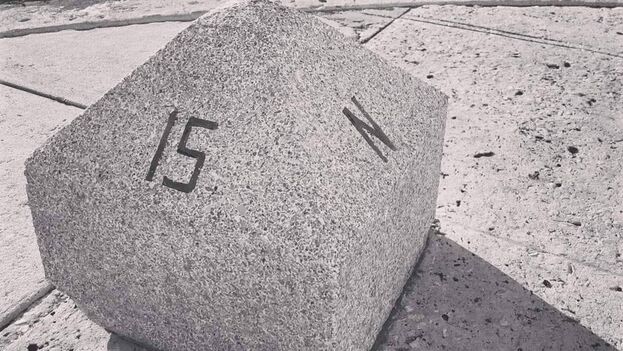
![]() 14ymedio, Yoani Sánchez, Generation Y, 6 November 2021 — Yunieski’s mother is going to have to “tie him up in the house” so that he does not go out on the street on November 15, a day in which several independent organizations have called a civic march in different cities of Cuba, the first after the protests of July when thousands of citizens took to the streets demanding freedom.
14ymedio, Yoani Sánchez, Generation Y, 6 November 2021 — Yunieski’s mother is going to have to “tie him up in the house” so that he does not go out on the street on November 15, a day in which several independent organizations have called a civic march in different cities of Cuba, the first after the protests of July when thousands of citizens took to the streets demanding freedom.
Yunieski is 35-years-old and lives in Centro Habana, one of the poorest areas of the capital. At least two of his best friends have been in prison for more than three months. They are among the almost 600 people arrested during and after the popular protests on July 11 who are still behind bars or are being prosecuted. The prosecution requests sentences of up to 27 years in prison for some of the protesters.
That Sunday, which seemed like a day like any other, dozens of kilometers from Yunieski’s house, the residents of the town of San Antonio de los Baños took to the streets, fed up with the continuous power cuts, the poor hospital management of the pandemic and lack of freedom. The spark of that protest, transmitted through the social network Facebook, spread throughout the country.
The echoes of popular action reached the capital and surprised the ruling party which, in the first moments, believed that it was something specific and easy to control. Miguel Díaz-Canel went to San Antonio de los Baños to try to placate the discontent. But as he was traveling by road, thousands of people gathered outside Havana’s Capitol building.
The social explosion came at a time when it seemed that the Cuban dictatorship could extend its control over the country for many more years. That false mask of popular unanimity that the ruling party built for decades was broken in one day. The Plaza of the Revolution responded with a repressive wave that brought the images of coups and excesses to the front pages of every newspaper in the world.
The repression was not only against the citizens and the participants in the protests, but the independent press also suffered the official onslaught with a particular fury. Telephone services cut off, house arrests, threats to families, police citations, fines and retaliation have increased since that day and as the next civic march draws near.
But, the disproportionate repression and the hardening of the official discourse experienced in these more than three months have not been able to prevent the causes that led thousands of Cubans to the streets from continuing to be present day. The lack of freedom, the desire for a democratic change and an economic opening were the main fuel of those protests and they continue to be conquests to be achieved.
Yunieski’s friends who took to the streets are under 40 and grew up with the dollarization of the economy that Fidel Castro imposed after the fall of the Soviet Union in the 1990s. They have nothing to lose, not even freedom, because in their day-to-day lives they feel trapped by the controls, the absurd prohibitions and the impossibility of choosing a party, expressing themselves without being gagged, and improving their standard of living.
They had never been freer than that day in July when in the streets they sang the musical theme Patria y Vida (Homeland and Life), which has become the anthem of change in Cuba. That day they used their mobile phones to record others like them who wanted a democratic transition on the island and who believed that the dictatorship was ending at that very moment. For 24 hours they inhabited the future.
For their part, the leaders of the Communist Party know that their system constitutes a political, economic and social anomaly, they are only trying to buy time. That time that the young people like Yunieski have plenty of and that Castroism lacks.
__________
Editor’s Note: A version of this article was originally published in Crusoé magazine .
____________
COLLABORATE WITH OUR WORK: The 14ymedio team is committed to practicing serious journalism that reflects Cuba’s reality in all its depth. Thank you for joining us on this long journey. We invite you to continue supporting us by becoming a member of 14ymedio now. Together we can continue transforming journalism in Cuba.
